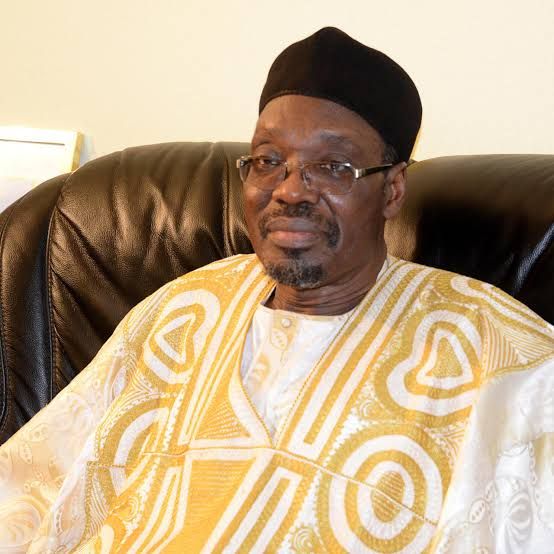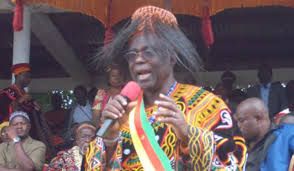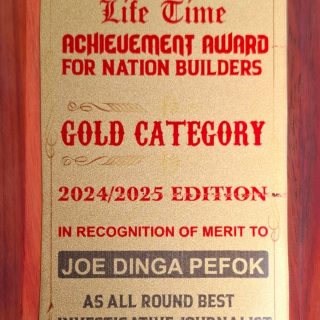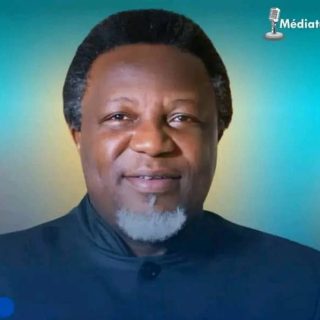How The Opposition and Civil Society In 1991 Paralyzed The Economy, But Biya Stood His Ground That Sovereign National Conference Was “Sans Objet”.

In 1991, the newly created opposition political parties and several civil society groups as well as civil society activities, created the very powerful Coalition of Opposition Parties and Civil Society Oragnisations. Samuel Eboua, the then National President of UNDP Party was the President of the Coalition, while Ni John Fru Ndi, the National President of the SDF, was the Vice President of the Coalition.
The Coalition of Opposition Parties and Civil Society Organizations organised Operation Ghost Towns, the Boycott of French Products, and other Civil Disobedience Campaigns like the Non – payment of Electricity and Water bills by the population, and so on. All these were aimed at forcing President Biya to organize the SOVEREIGN NATIONAL CONFERENCE in Cameroon. The demand that a sovereign national conference should be organised to open the way for a genuine democracy and genuine change in their different countries, was the people’s demand then in many Francophone African countries. In a few countries like Benin Republic, the Governments ceded to the pressure and organised a sovereign national conference. But in Cameroon, President Biya resisted, provocatively declaring to Cameroonians that: “LA CONFERENCE NATIONALE SOUVEREIGN EST SANS OBJET”, meaning that the there was no tangible reason to hold a Sovereign National Conference in Cameroon.
Ghost Town Operations Were Largely Effective
It should be noted the Ghost Town operations that were organised in many towns and cities across Cameroon in a bid bring the ‘stubborn’ Biya regime to its knees, were largely effective. The nation’s economic capital, Douala, like many other towns and cities in the country, was shut down on Mondays to Fridays by Operation Ghost Town. The Douala Port which then was handling about 95 % of Cameroon’s external trade, function only on weekends, that is Saturdays and Sundays, when the organisers of the Ghost Town operations, allowed economic activities to open, for the population to replenish their stocks.
Besides the Ghost Towns Operations, the Coordination of Opposition Parties and Civil Society Organisations, also frequently organised protest demonstrations that at times led to clashes with the Forces of Law and Order.
Red Card To Paul Biya
During that rough period of political turmoil in 1991, when the country was boiling under Ghost Town and Civil Disobedience, also came the ‘Carton Rouge’ or Red Card. It was a Red Card that the opposition parties and civil society groups brandished to President Biya, asking his to leave power. The architect of the Red Card was Djeukam Tchameni, and the cards were printed at an off- set printing press whose proprietor was then a strong political activist, Jean Michel Nintcheu.
The Red Card which was just a tiny piece, sold for 100 FCFA, and it was obligatory for people to buy or to be in possession. In Douala for example where the Red Card was being produced, it was difficult to move around without the Red Card. Even many CPDM people were forced to secretly buy the Red Card, for their own personal security. The boys that moved around in groups to enforce the buying of Red Cards, behaved more like hooligans. Persons that were considered rich, were forced to 5000 FCFA or even 10,000 FCFA, or even more, for a card.
There is no doubt that the Red Card was sold for millions of francs CFA in the country in 1991. But the question is what happened to the money. There is no doubt that some individuals chopped millions of francs from the sale of Red cards,
But Biya Resisted All The Pressure
Worth noting that the Operation Ghost Towns and other operations carried out by the opposition were so strong across the country, because all the real or genuine opposition parties like SDF, UNDP , CDU, MP, UFDC and others were all active members of the Coalition of Opposition Parties and Civil Society Organisations. However, despite the fact that the country’s economy was brought to its knees by the Ghost Town Operations and Civil Disobedience Campaign, President Biya still refused to yield to the call to organize a Sovereign National Conference.
Nevertheless, it should be noted that the 1991 Coalition of Opposition Parties and Civil Society Organizations, is so far the only structure since the rebirth of multiparty politics in Cameroon that succeeded to bring together all opposition parties and leaders, as well as all major civil society groups and activists.
Issa Tchiroma Bakari
In 1991, Issa Tchiroma Bakari was the Secretary General of the UNDP, and was very active in the Coordination of Opposition Parties and Civil Society Organizations. Issa Tchiroma later joined the Biya Government as Minister of Transport. During an official visit to Bamenda as member of government, Issa Tchiroma in a humorous tone pointed to a hedge close to Le Bien Hotel, where he said they once hid behind and threw stones at gendarmes. It happened that a meeting of the Coordination of Opposition Parties and Civil Society Organisation met in Bamenda, and at the end of the meeting there was a protest march. The Gendarmes intervened to stop the protest march, and a clash erupted. Tchiroma and some comrades hid behind hedges and were throwing stones at the gendarmes. Later the same Issa Tchiroma Bakari, joined the same Biya regime to which they were brandishing a Red Card. Politicians!




